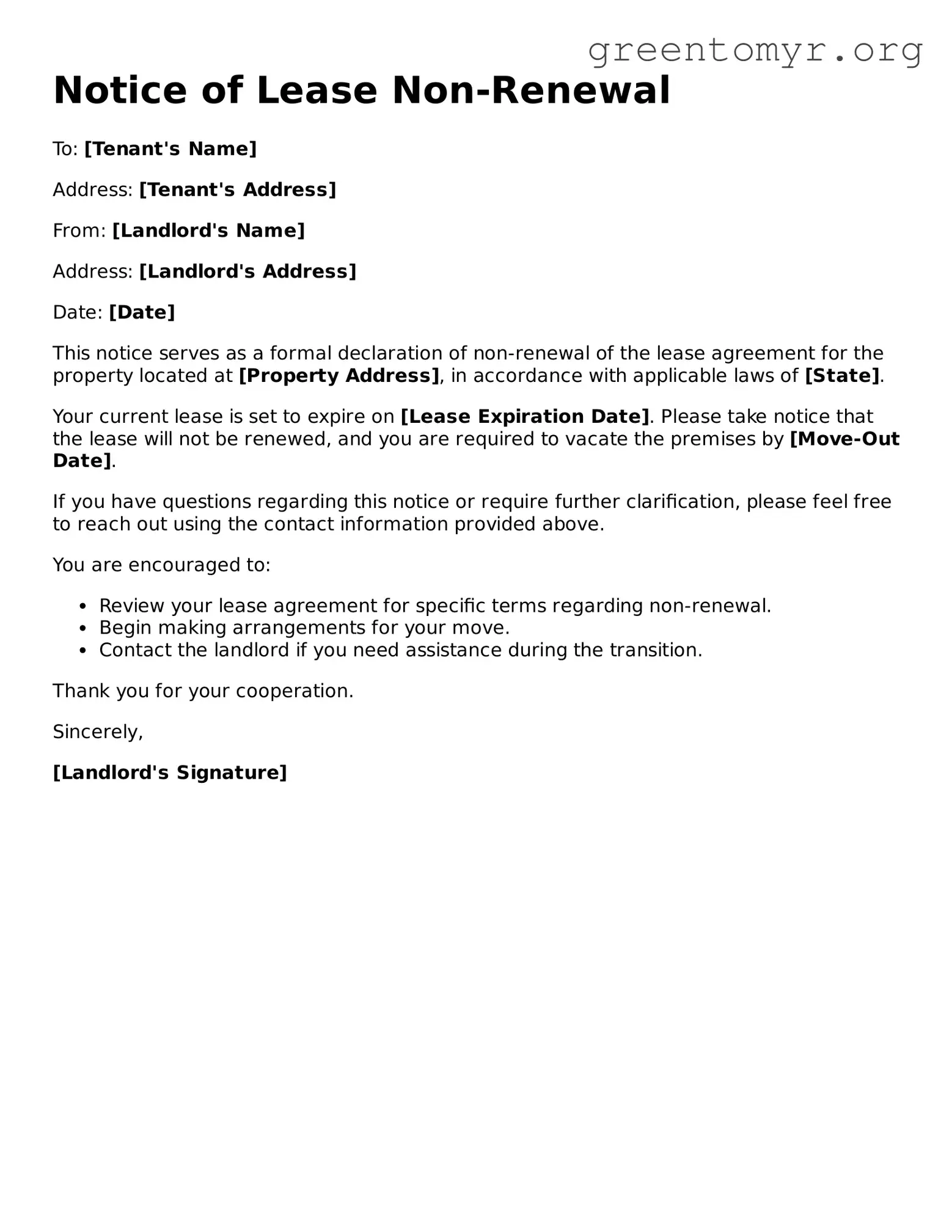Notice of Lease Non-Renewal
To: [Tenant's Name]
Address: [Tenant's Address]
From: [Landlord's Name]
Address: [Landlord's Address]
Date: [Date]
This notice serves as a formal declaration of non-renewal of the lease agreement for the property located at [Property Address], in accordance with applicable laws of [State].
Your current lease is set to expire on [Lease Expiration Date]. Please take notice that the lease will not be renewed, and you are required to vacate the premises by [Move-Out Date].
If you have questions regarding this notice or require further clarification, please feel free to reach out using the contact information provided above.
You are encouraged to:
- Review your lease agreement for specific terms regarding non-renewal.
- Begin making arrangements for your move.
- Contact the landlord if you need assistance during the transition.
Thank you for your cooperation.
Sincerely,
[Landlord's Signature]
